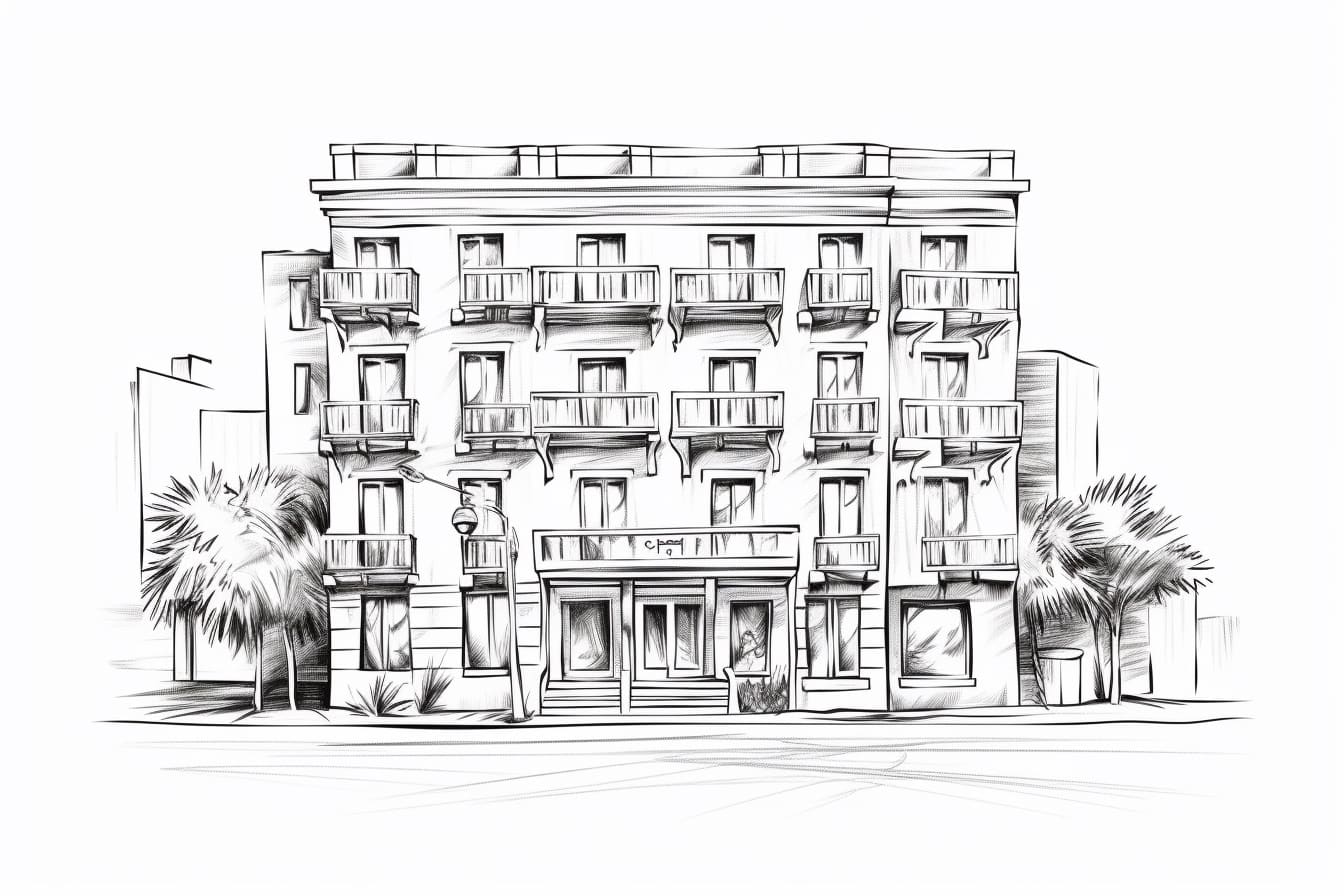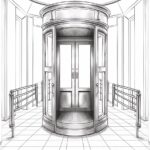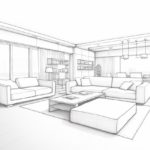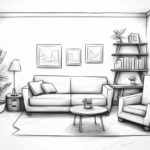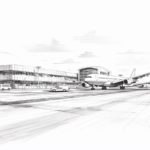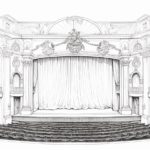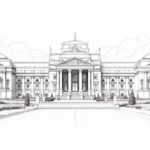Drawing an apartment is a wonderful way to explore the intricate details and unique characteristics of architectural design. From the cozy interiors to the intricate facades, apartments offer a wealth of inspiration for artists of all levels. In this guide, we will delve into the fundamentals of drawing apartments, from understanding perspective and proportion to capturing the play of light and shadow. Whether you are a seasoned artist looking to sharpen your skills or a beginner eager to explore the world of architectural drawing, drawing apartments offers a creative and rewarding journey that will challenge and inspire you. So grab your sketchbook and let’s embark on a creative exploration of the art of drawing apartments!
Materials Required
To draw an apartment, you will need the following materials:
- Drawing paper or sketchbook
- Pencils (different grades for shading and details)
- Eraser
- Ruler or straight edge
- Compass (for drawing circles or curves)
- Fine-tip pens or markers (for outlining or adding details)
- Colored pencils or markers (optional, for adding color)
- Reference photo or sketch of an apartment building for inspiration
With these materials, you can create a detailed and realistic drawing of an apartment building. Remember to take your time, pay attention to proportions and details, and enjoy the process of creating your artwork.
How to Draw an Apartment: a Step-by-step Guide
Step 1: Start with the Basic Structure
Begin by drawing a horizontal line for the ground where the apartment building will sit. Then, draw a vertical line to represent one side of the building.
Step 2: Add the Main Shape of the Building
Extend the vertical line upwards to create the height of the building. Draw another vertical line parallel to the first to establish the width of the building. Connect the top ends of these lines with a horizontal line to complete the basic shape of the building.
Step 3: Divide the Building into Floors
Draw horizontal lines across the building to divide it into different floors. Ensure these lines are evenly spaced for a balanced look.
Step 4: Add Windows and Doors
On each floor, draw rectangular shapes for windows and doors. Make sure the windows are evenly spaced and aligned vertically on each floor. Add smaller details like doorknobs and window frames to enhance realism.
Step 5: Include Balconies and Details
To give the apartment building more character, add balconies by drawing protruding rectangles on different floors. Include details like railings and plants on the balconies for a more realistic touch.
Step 6: Add Texture and Depth
Create depth by adding shading to the building. Darken areas that would be in shadow, such as under balconies or on the sides away from the light source. Use cross-hatching or stippling techniques to add texture to the building’s surfaces.
Step 7: Final Touches
Refine any details, add surrounding elements like trees or street lamps to complete the scene. Consider adding a background to show the building’s context in a cityscape.
Step 8: Review and Refine
Take a step back and review your drawing. Make any necessary adjustments to proportions, details, or shading to ensure a cohesive and visually appealing final result.
Conclusion
In conclusion, drawing an apartment can be a challenging yet rewarding experience for artists of all levels. By breaking down the complex structure into basic shapes and paying attention to perspective and details, artists can create a realistic and visually engaging representation of an apartment. Remember to practice regularly, observe real-life examples, and experiment with different techniques to develop your skills and create unique and captivating apartment drawings. With patience and dedication, you can hone your craft and produce stunning artworks that showcase your creativity and talent.
Fun Facts About Apartments
- The word “apartment” comes from the Italian word “appartamento,” which means a separated space within a larger building.
- The first modern apartment building was built in 1869 in New York City.
- Apartments became popular in urban areas during the Industrial Revolution as a way to accommodate the growing population.
- The oldest existing apartment building in the world is the Queen’s Apartments in the Palace of Versailles, France, built in 1682.
- The concept of luxury apartments with amenities such as swimming pools, gyms, and concierge services became popular in the mid-20th century.
- In some countries, such as Japan, it is common for tenants to pay “key money” or a gift to the landlord as a gesture of goodwill when renting an apartment.
- The smallest apartment in the world is believed to be just 8 square meters (86 square feet) in size, located in Paris, France.
- The tallest residential apartment building in the world is 432 Park Avenue in New York City, standing at 1,396 feet tall.
- In some countries, such as Sweden and Norway, it is common for apartments to have a sauna as a standard feature.
- The concept of co-living apartments, where residents share common spaces and amenities, is becoming increasingly popular among young professionals and digital nomads.
Suggestions for Scenes and Settings for Apartment Drawings
- Cozy Living Room: Imagine a warm and inviting living room in an apartment, complete with a crackling fireplace, comfortable couches, and shelves filled with books and art pieces. Add in a fluffy rug, a few indoor plants, and soft lighting to create a cozy atmosphere.
- Urban Loft: Picture a trendy loft apartment in a bustling city, with exposed brick walls, high ceilings, and large industrial windows offering a view of the city skyline. Include modern furniture, minimalist decor, and pops of color to contrast with the urban backdrop.
- Bohemian Bedroom: Envision a bohemian-inspired bedroom in an eclectic apartment, featuring a canopy bed draped with colorful fabrics, a collection of mismatched vintage furniture, and walls adorned with tapestries and artwork. Incorporate lots of textured fabrics, hanging plants, and dreamcatchers for a whimsical touch.
- Artist’s Studio: Create an artist’s studio in a spacious apartment, with large windows letting in natural light, a cluttered but organized workspace filled with paints, brushes, and canvases, and a comfortable seating area for inspiration breaks. Include an easel with a work-in-progress painting and shelves overflowing with art supplies.
- Minimalist Kitchen: Design a sleek and modern kitchen in a minimalist apartment, featuring clean lines, stainless steel appliances, and marble countertops. Keep the color palette neutral with pops of metallic accents, and add in a statement light fixture or piece of artwork to create visual interest.
- Rooftop Garden: Envision a rooftop garden oasis in a luxurious penthouse apartment, complete with lush greenery, a variety of potted plants, and cozy seating areas for enjoying the view. Include a small fountain or water feature, twinkling string lights, and maybe even a hammock for ultimate relaxation.
- Vintage Study: Imagine a vintage-inspired study in a classic apartment, with dark wood paneling, a grand mahogany desk, and walls lined with floor-to-ceiling bookshelves. Add in a plush leather armchair, a Persian rug, and a vintage globe for a sophisticated and timeless look.
- Industrial Dining Room: Create an industrial-chic dining room in a converted warehouse apartment, with exposed pipes, concrete floors, and a large reclaimed wood dining table surrounded by mismatched chairs. Hang oversized pendant lights overhead, display industrial-inspired artwork on the walls, and incorporate metal accents for a modern touch.

